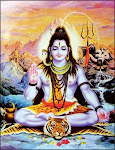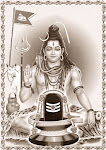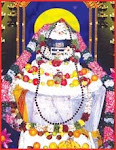
Friday, 19 March 2010
HINDUISM
Mythology as part of Religion
K.S. Sivakumaran
The purpose of these religious pages in the Daily News is to report and review religious aspects of each religion that is practised in the country. We would expect readers of the Hinduism Page to contribute elucidatory articles that lend themselves to discussion and information to help readers, particularly those following different faiths, understand the essentials of Saiva Siddantham and Vedantham. We would also request Hindu religious institutions to provide us material in English of Hindu religious calendar of events and even pictures well in time for us to consider publishing them. Please address your contributions to The Features Editor (Hinduism Page), Daily News, Lake House, Colombo 10.
This week let us glean some mythological aspects in Hinduism, as Culture includes mythology and anthropology, and they are related to Religion too. European scholars like Max Muller, Weber, Roth and Lassen were some of the pioneers in introducing Hindu Mythology and Literature to the westerners in English. However, their interpretations were not totally comprehensive. More than 15 years ago John Dowson compiled a Classical Dictionary of Hindu Mythology and Religion among other related subjects. We shall gather facts from time to time from this book too on major mythical identities in Hinduism.
Shall we first take the myth about Agasthiyar, a Rishi? We are told that he had written several hymns in the Rig Veda. He was born in a water jar. ‘As a fish of great lustre’ He was small in size. There is a fable to say that he commanded the Vundhya Mountains to prostrate themselves before him. According to another fable he drank up the ocean because it had offended him. One other tale tells us that he formed a girl out of the most graceful parts of different animals and the girl became his wife. Her name was Lopaamudraa.
If that was the myth regarding Agasthiyar in the north of India, in the south he finds a prominent place in Thamil literature. He was the first to teach science and literature to the Thamilians. According to one Wilson The traditions of the south of India ascribe to Agasthiyar a principal share in the formation of the Thamil language and literature, and the general tenor of the legends relating to him denotes his having been instrumental in the introduction of the Hindu religion and literature into the Peninsula.
sivakumaran.ks@gmail.com
--------------------------------------------------------------------------------
Kochchikade Sivan Temple:
Festival begins tomorrow
Chelvathamby Maniccavasagar traces the historical importance of the ancient Hindu temple in Colombo.
The annual festival of Sri Ponnambalavaneswarar Temple at Kochchikade, Colombo13 will commence with the flag hoisting ceremony tomorrow (March 20).
Sri Ponnambalavaneswarar Temple was built in 1857 by Sri Ponnambala Mudaliyar, the father of great patriot Sir Ponnambalam Ramanathan. In 1850 Sri Ponnambala Mudaliyar went as a pilgrimage to South India and visited several Hindu Temple particularly Rameswara Temple believed to have been Rama of Ramayana fame.
Historically important Temple festival at Kochikadae begins Saturday
As his arrival from the pilgrimage to India the Mudaliyas thought of the need of a Shivan Temple in the heart of the city of Colombo and built this temple at Kochchikade in 1857. In fact, the Kumbabishekam was performed according to Agamic tradition.
The administration of this temple which was carried out by Sir Ponnambala Mudaliyas to the greatest satisfaction of the devotees in the city of Colombo and outstations, was handed over to Sir Ponnambalam Ramanathan in 1905.
Thereafter, Sir P. Ramanathan made a pilgrimage to India and saw the magnificent temples in South India and according to the Agamic tradition and the Dravidian Style of Architecture he built this temple with granite. For this purpose of rebuilding this temple he brought eminent architects and sculptors from South India and the work which started in 1907 was completed in 1915.
In this temple the floor, wall, pillars and the roof are made out of granite. The Moolasthanam (main sanctum) is decorated with intricately carved single stone columns stands majestically an either side flanking hall and also granite beams for the roof to allow the light to come in.
The main entrance of the temple is tastefully decorated. The beautiful chariot which carry the deities on the annual festival could be seen in the specially erected room just opposite of the main entrance of the temple.
God is in our hearts like the lantern in the hand. If only the control our senses and our hearts and tread the path of virtue and devotion to the supreme being we need nothing else. If we are ever in doubt and without faith, like a vessel without captain, we shall be tossed on the turbulent waters of life buffeted by the winds of fate and circumstances, unable to stand the stresses and strains, hope deferred and desire unfulfilled. If we seek God’s grace, we shall always succeed in keeping our senses in check.
One of the cardinal principles of Hinduism is the belief that there is a spark of the DIVINE in every person. Each individual encapsulates the ATMAN or the SOUL which is intrinsically DIVINE.
”You and I are one because we are of the same divine source”, the Upanishadic teaching.
If one accepts this cardinal principle, then there cannot be any distinction on the basis of caste, creed, gender or language. Equality of persons in ensured by this spiritual bond. Further, Hinduism is unique in the sense that it accepts that there are various paths to salvation.
The Upanishad states “As the different streams having their sources in different places, all mingle their water in the sea. The different paths which men take through different tendencies, various though they appear, crooked or straight, all lead to THEE”.
In the tradition of Hindu literature the chariot represents our body which is yoked to four horses (the sense organs) wherein the individual sits, dejected and dependent driven by the intellect which, into the mind guide the horses.
These horses represent human passions and the reins symbolise the necessity of restraining and guiding the passions. The journey of the chariot is an emblem of the progress of life and the lesson is that throughout his life, one should control and guide the passions with the help of the soul. These passions are the driving force of life but unstrained and unguided will wreck a man’s life.
Indeed, during the chariot festival the statues of Lord Shiva, Lord Ganesha, Goddess Ambal, God Muruga are decorated and illuminated and taken along the compound of the temple followed by poojas and bhajans.
Hence, let us pray to Sri Ponnambalawaneswarar and receive His divine blesssings.
--------------------------------------------------------------------------------
Temple festival after 20 years
Maha Sivarathri after 20 years at Thiruketheeswaram temple, Mannar
Hindu devotees from all parts of the country participated in a Maha Sivarathri pooja held at the Thiruketheeswaram Kovil in Mannar on March 13.
Northern Province Governor Maj. Gen. G.A. Chandrasiri, Resettlement and Disaster Relief Services Minister Risath Bathiyutheen, Indian High Commissioner Ashok Kantha and security chiefs in the North were also present on the occasion. This ceremony was held at the kovil after a lapse of 20 years. - (Picture by Bandara Vipulasena Vavuniya Central special corr.)
--------------------------------------------------------------------------------
Folk Deities III:
The Chairman Swamy
Thilaka T. Wijeratnam
In a small village by the river Thamivaparani lived a good man called Arunasalam.
Once when he was bathing in the river, a mischievous girl, one who was betrothed to him sent a small girl to take his veshti-cloth.
When Arunasalam came out he saw his veshti missing. He started walking to his house in the loincloth.
On the way he met a textile merchant. He put down the bundle and took a new veshti, gave it to him and left without even getting the money.
The betrethed girl was watching this scene and was amazed beyond wards. The little girl who took his veshti took it to her mother and told her what happened.
The mother was horrified at it, and went to Arunasalam’s and begged forgiveness.
He told her he should be worried only if the work veshti was in a condition to be worn.
When the lady spread out the veshti it was all worn out and torn.
People considered Arunasalam as a demi-god an revered and respected him. He seemed to have performed some mystic, miraculous deeds too.
Having heard of him, the collector equivalent the (G.A. In Sri Lanka) made him the village chief. Later he made him the chairman of the village Panjayath rural court. But he lived the life of a recluse while functioning as chairman.
In the village was a woman by the name of Sudalai Pe’chi. She had an unusual affliction.
There were swollen patches here and there on the skin. In disgust her husband left her. She went crying to the Chairman Arunasalam.
He gave her holy ash, chanting a mantra and some holy water and told her to see him on the new moon day.
In the meantime Arunasalam called his friend Bala Krishnamoorthy and told him he would depart this world on new moon day. He instructed his friend to dig a pit beside the banyan tree on the bank of the river and bury him in silting position.
At that time, he told, there would be an eagle circling in the sky.” On its third round, its shadow would fall on me. Then bury me.”
The whole village got to know of his death and awaited the new moon day with a heavy heart. Came new moon day the chairman did his duties as usual then went home and lay down in his bed. Sharp at mid noon 12 o’clock, he breathed his last, as he said.
His friend and others dug a pit at the spot he mentioned and lowered his body into the pit, in a sitting position as he had instructed.
Then they saw to their wonder the eagle circling above.
On the third round its shadow fell on the Swamy ‘c body.
The people threw sand into the pit and filled it thus burying him. Meanwhile the woman who went to him with the ailment, came crying saying. “He told me to come on new moon day. But he is not alive to see me.
Just then an old man came that way. He told her to visit the burial place for two new moons, “take the soil over his grave and apply to your body. Drink the holy water. You will be cured.”
She did likewise and was cured. Her skin was smooth and she regained her lost beauty and health. Moreover her husband took her back
There is a temple for this chairman swamy. People suffering from any disease visit the temple and used the soil there as medicine for any ailment.
So chairman swamy in another folk deity come to stay in Thamilnadu.
(Courtesy Kalki) Source Kalaniboran
--------------------------------------------------------------------------------
A Formless eternal and mysterious being
Saiva tradition identifies Lord Siva or Shiva as a formless eternal and mysterious being with many aspects and dimensions.
He is both transcendental and immanent, who cannot be quantified and qualified objectively with our limited awareness.
He is beyond our mind and senses, but within the reach of our experience and awakening. Various schools of Saivisma or Shaivism and the scriptures that form their basis allude to some important aspects of Siva, as experienced by the awakened jivas in their transcendental states, which are mentioned below.
* Siva as nirguna Brahman
*Siva as saguna Brahman
*Siva as lord of a functional universe
*Siva as dynamic power
*Siva as a deluded soul
*Siva as an enlightened and self-aware soul
*Siva as a Vedic deity
Internet: Saivaism Jairam
--------------------------------------------------------------------------------
Shaiva Siddhanta
Shiva, Lord of the Dance (Nataraja):
Saiva Siddhantam (also Shaiva Siddhantam) is a Saivite Hindu school that encompasses tens of millions of adherents, predominantly in Tamil Nadu and Sri Lanka. Today it has thousands of active temples there and dozens of monastic/ascetic traditions: twenty-five Brahmin families, the Adisaivas, are qualified to perform its rituals.
The culmination of a long period of systematisation of its theology appears to have taken place in Kashmir in the tenth century, the exegetical works of the Kashmirian authors Bhatta Narayanakantha and Bhatta Ramakantha being the most sophisticated expressions of this school of thought.[1] Their works were quoted and emulated in the works of twelfth-century South Indian authors, such as Aghorasiva and Trilocanasiva.[2] The theology they expound is based on a canon of Tantric scriptures called Siddhantatantras or Shaiva Agamas.
This canon is traditionally held to contain twenty-eight scriptures, but the lists vary,[3] and several doctrinally significant scriptures, such as the Mrgendra,[4] are not listed. In the systematisation of the liturgy of the Shaiva Siddhanta, the Kashmirian thinkers appear to have exercised less influence: the treatise that had the greatest impact on Shaiva ritual, and indeed on ritual outside the Shaiva sectarian domain, for we find traces of it in such works as the Agnipurana, is a ritual manual composed in North India in the late eleventh century by a certain Somasambhu.[5] After the twelfth century, North Indian evidence for the presence of the Shaiva Siddhanta grows rarer.
The school appears to have died out in other parts of India even as it grew in importance in the Tamil-speaking south. There its original emphasis on ritual fused with an intense devotional (bhakti) tradition. The Tamil compendium of devotional songs known as Tirumurai, along with the Vedas, the Shaiva Agamas and “Meykanda” or “Siddhanta” Sastras[6], form the scriptural canon of Tamil Shaiva Siddhanta. Tirumurai is a twelve-volume anthology of the works of few among sixty-three poets, the Nayanars,[7][8],Manikkavacakar, Sekkizhar and Others.The Meykanda sastras are fourteen in number, authored by St. Meykandar and his disciples.
Wickipedia
--------------------------------------------------------------------------------
Three books launched today
The launching of two books published by the Hindu Religious and Cultural Affairs Department will take place this morning (March 19, 2010) at 9.00 a.m. at the lecture hall of the Ramakrishna Mission at Wellawatta.
The three books are Part X of the Hindu Encyclopedia and Thandi Alankaram and Thirukaraip Puranam.
The Director of the Department Shanthi Naavukkarasan will chair the function. Bandu Bandaranaike will grace the occasion.
A special guests M. M. Herath, Secretary to the Ministry of Religious Affairs and Emeritus Professor S. Pathmanathan are invited.
The publication will be critically reviewed by Senior Lecturers K. Iraghuparan and Dr. V. Maheswaran of the Departments of Thamil in the Universities of South Eastern and Peradeniya respectively.
Swami Sarva Roopanandaji, Head of the Ramakrishna Mission in Colombo, Kumaresan Purantharan M. Shanmuganathan, Thevakumari Haran, all from the Hindu Cultural Affairs Department will also participated in the program which will end by 11.00 a.m.









